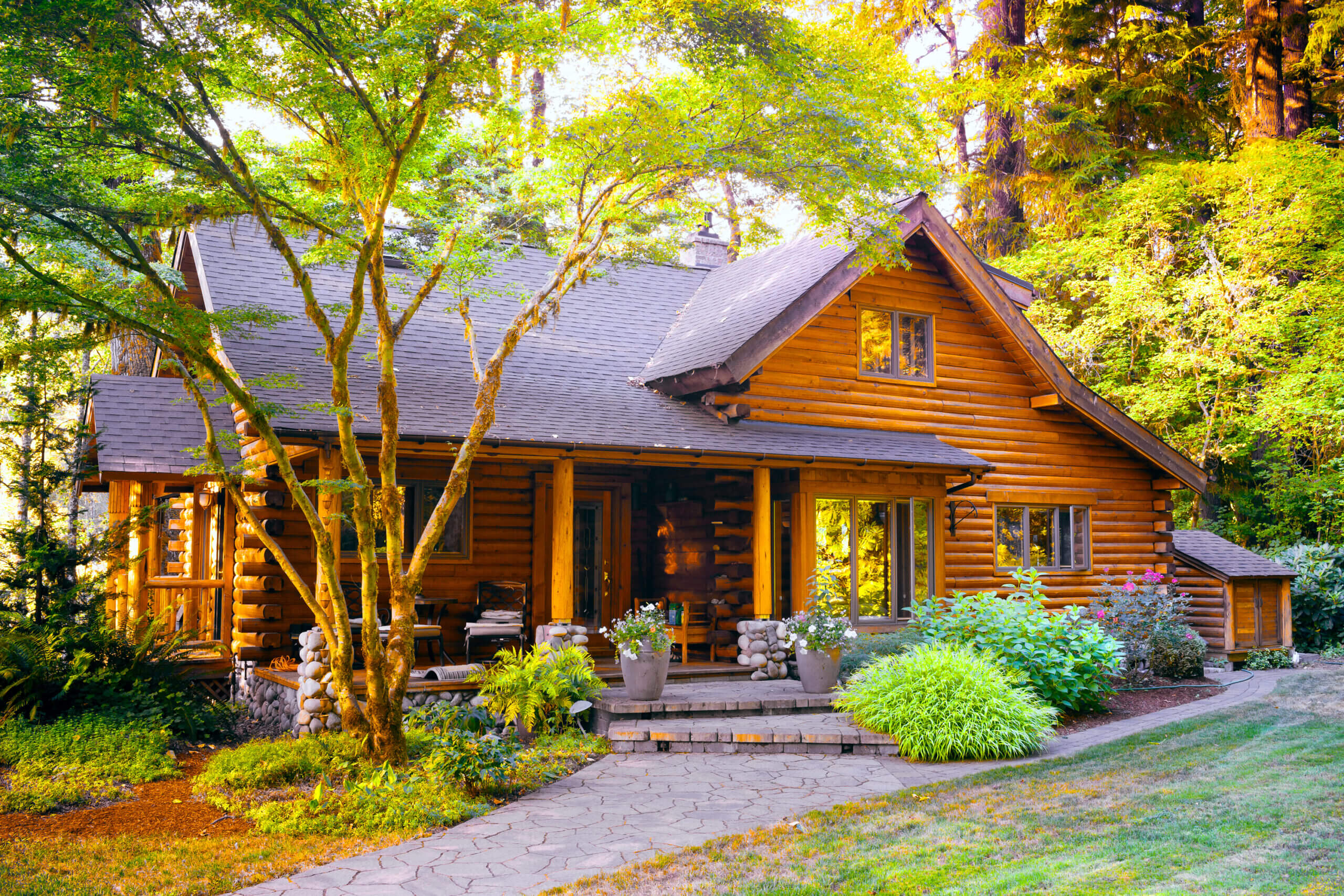
Owning a log cabin in Canada is a dream come true for many. The rustic charm, connection to nature, and cozy ambiance make it an ideal retreat. However, the Canadian climate can be unforgiving, with its cold winters and fluctuating conditions.
To ensure your log cabin remains a cherished haven, you must address two critical aspects: maintenance in Canada’s harsh climate and incorporating sustainable features into your log cabin.
In this comprehensive guide, we’ll explore how to protect and enhance your log cabin for long-term enjoyment while minimizing its environmental impact.
Log Cabin Maintenance Tips for Canada’s Harsh Climate
Harsh winters and unpredictable weather can take a toll on your log cabin. Here are some maintenance tips to keep it in top shape.
1. Regular Inspections
Regularly inspect your log cabin for signs of damage, including cracks, gaps, or water infiltration. Early detection can prevent more extensive issues down the road. A comprehensive inspection should include checking the exterior, roof, foundation, and interior for any signs of wear or damage.
2. Sealing and Staining
Invest in high-quality sealants and stains to protect the wood from moisture, UV rays, and pests. Applying these products every few years is essential to maintaining your cabin’s durability. Choose eco-friendly sealants and stains that are both effective and environmentally responsible.
3. Roof and Gutter Maintenance
Keep your roof in good condition by replacing damaged shingles promptly. Ensure gutters are clean and functional to prevent water from pooling or leaking into the cabin. Periodically check the roof and gutters for debris, especially after heavy storms, to prevent clogs and ice dams.
4. Chinking and Caulking
Reapply chinking or caulking between logs as needed to maintain the cabin’s insulation and weather resistance. This is particularly crucial in Canada’s cold winters. Use eco-friendly chinking and caulking materials that minimize off-gassing and environmental impact.
5. Snow Removal
Regularly clear snow from your cabin’s roof and walkways to prevent heavy snow loads and ice dams. A roof rake can be a valuable tool in this effort. Consider investing in a snow removal plan or equipment to ensure safe and efficient snow removal during the winter months.
6. Pest Control
Take preventive measures against insects and pests that can damage the wood. Regularly inspect and treat your cabin to keep it pest-free. Consider using natural and non-toxic pest control methods to minimize the impact on the environment.
Sustainable Features for Canadian Log Cabins
Incorporating sustainable features not only benefits the environment but can also enhance the efficiency and long-term value of portable log cabins.
1. Solar Panels
Harness what you can from the sun’s power by installing solar panels on your log cabin’s roof. Solar energy can provide electricity and reduce your reliance on non-renewable energy sources. Additionally, solar panels can help reduce your cabin’s carbon footprint and also lower your energy bill over time.
2. Rainwater Harvesting
Collect rainwater for non-potable uses like irrigation and toilet flushing. Rainwater harvesting systems are eco-friendly and can help conserve water, especially in regions with water scarcity. Consider using rain barrels or a more extensive rainwater harvesting system, depending on your cabin’s water needs.
3. Energy-Efficient Windows and Doors
Invest in energy-efficient windows and doors to improve insulation and reduce heating and cooling costs. Look for products with high R-values to withstand cold Canadian winters. Double or triple-glazed windows and well-insulated doors can make a significant difference in energy efficiency.
4. Composting Toilets
Consider installing a composting toilet system to reduce water usage and the strain on septic systems. Composting toilets are low-maintenance and eco-friendly, as they convert waste into nutrient-rich compost, which can be used in your garden, further contributing to sustainability.
5. Efficient Heating and Cooling
Opt for energy-efficient heating and cooling systems, such as heat pumps or wood stoves with catalytic converters. These options provide warmth while minimizing energy consumption. Additionally, consider using programmable thermostats to optimize heating and cooling cycles for maximum efficiency.
6. Sustainable Landscaping
Choose native plants for landscaping to reduce water usage and maintenance. Native plants are well-adapted to the local weather and support local wildlife. Implementing sustainable landscaping practices, such as xeriscaping or using permeable hardscapes, can further enhance your cabin’s sustainability.
Conclusion
Owning a log cabin in Canada is a rewarding experience, but it comes with its unique challenges. By following log cabin maintenance tips tailored to Canada’s harsh climate and incorporating sustainable features into your cabin’s design and operations, you can ensure your cabin withstands the test of time while minimizing its environmental impact.
With a combination of proper care and sustainable practices, your log cabin in the heart of Canada’s wilderness can be a haven of beauty, comfort, and environmental responsibility for generations to come.
Emily Hawthorne
Related posts
Stay connected
Today's pick
- Things to Remember While Designing Your Custom Modular Kitchen in GurgaonGurgaon now known as Gurugram is the second largest city in the state of Haryana and is a reflectiossn of an ideal modern city with futuristic goals. Witnessing rapid urbanization, it has also emerged as a hub for contemporary homes, with homeowners seeking innovative and... The post Things to Remember While Designing Your Custom Modular […]

